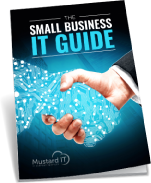How to Better Control Data and Manage Employees Working From Home
The pandemic has seen a surge in WFH employees. It seems more people are working from home every day and as many businesses realise those cost savings, they are neglecting to see the potential security flaws in their IT systems.
The problem occurs when employees work from home and whether instructed otherwise or not, they tend to use their personal devices for work tasks. Deloitte, one of the world’s leading consulting companies has written about cybercrime and the risks from working at home. They mention that employees working from home have noticed a marked increase in probing, fraudulent emails. Often, they nonchalantly check email, log in to databases and handle customers or other employee’s data without understanding the risks. The report from Deloitte also highlights that some employees admit to keeping sensitive data with them just in case the company goes bust and they need it in the future. Unknowingly, they are exposing the organisation to great risk because personal devices are extremely vulnerable to cyber-attack.
To make matters worse, they sometimes bring their computers from home into the work environment and could potentially import viruses onto the company system.
However, the risk of using personal devices need not be such a colossal issue, as long as the organisation takes steps to protect itself from cybercriminals.
Bring Your Own Device (BYOD) & Cybersecurity
Employees that use mobile phones and laptops when working from home unwittingly expose the business to unseen dangers. Dangers such as malware, phishing, and ransomware attacks. Usually, many of these risks are mitigated by the expert IT security measures the company employs, but the system is often only as strong as its weakest link.
Data breaches are more likely on personal devices that are used to access work email and these data breaches could be extremely costly for an organisation, considering the recent implementation of GDPR.
The computers of your employees likely have inadequate password protection and basic anti-virus protection if any. Therefore, any organisation that permits BOYD must implement a stringent and robust regime to ensure all devices are protected properly.
How to Mitigate Risk
Although you can lower the threat to the organisation from insecure personal devices you can never completely eradicate it. In today’s climate, many would say it is impossible to eradicate the threat from cybercrime even with the best security measures. Regardless, we always recommend that the organisation should provide IT assets to its employees where possible. They can be better managed, and it is often the most cost-effective solution. However, if the business cannot provide work computers, they should employ a solid BYOD management policy.

Incorporating a BYOD Management Solution into Your Business
A good BYOD policy will continually evolve to meet current threats to both employees’ devices and their infrastructure at home. Additionally, it should facilitate flexibility between the home working environment and the organisation.
Ideally, to maximise protection against threats at home a good authentication protocol should be developed. At the very minimum, it should make use of two-factor authentication, which serves as an added layer of protection that largely negates the threat of unauthorised access.
Without prying on your employee’s privacy, a competent BOYD management solution should monitor the data being used by your employees. Microsoft 365 security solutions is a useful tool that can facilitate live monitoring of account usage. Failing that, Mobile Device Management can also be of benefit.
Introduce an MDM Solution
MDM is a means of manipulating and managing devices remotely, allowing an organisation’s IT experts to monitor and implement proper security measures. MDM is advantageous when the quick deployment of work-prescribed apps and security software is necessary. Functionality can also be manipulated. For example, the camera can be disconnected, restrictions can be placed on web browsers and games can be prevented from downloading.
For all intents and purposes, using an MDM is like building a partition inside employee’s devices to separate them from work activities. This ensures work emails and personal emails never mix. MDM is stacked with other useful tools and features such as secure access to cloud-based applications, and it enables an organisation to add extra partitions and purge data remotely if necessary—which can be extremely useful if the device is lost or stolen.
PC mag has curated a list of the best MDM solutions.

Maintain Control and Meeting the Challenge
Implementing BYOD management and maintaining cybersecurity is challenging but it is a challenge that must be met head-on. Security risks can be mitigated through the adequate adoption of a competent BYOD management policy. Additionally, it is worth mentioning that this should be supported by the HR department and reflected in their policies and employees should receive proper training to help them understand the process.
About Mustard IT, your technology partner
Mustard IT is a trusted team, experienced with the latest technology and able to explain complex issues to you in a language you’ll understand. Contact us today to find out how we can help you.




